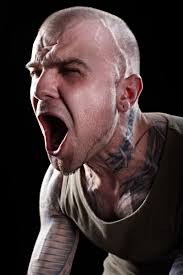Substance-Induced Psychotic Disorder
The primary features of Substance-induced psychotic disorder are the development of prominent psychotic symptoms, like hallucination or delusions (or both) that have been determined to be caused by a psycho-active substance. These symptoms are usually experienced during intoxication with the substance or during the period of withdrawal, when a person stops taking the substance. The substances can be a prescription drugs, alcohol, or other toxins.
Subtypes of Substance Induced Psychotic Disorder:
This disorder has sub types that are based on the symptoms; it can be a disorder mainly with delusions or mainly with hallucinations. Both delusions as well as hallucinations are key symptoms in any type of psychotic disorder. It also has subtypes based on the onset of symptoms:
During intoxication: if the symptoms began during intoxication. This type usually lasts during the time period that the substance is being taken.
During withdrawal: The disorder may also begin during the withdrawal period and may manifest itself up to 4 weeks after an individual stops taking the intoxicating substance.
Causes of Substance Induced Psychotic Disorder:

Substance-induced psychotic disorder treatment will depend on the level of the condition.
Substance-induced psychotic disorder has a very straight forward cause. It is caused directly by the effects of the intoxicating substance which can include alcohol, toxins and medications.
The DMV-IV and the American Psychiatric Association has classified 10 substances that cause the disorder:
- Alcohol
- Cannabis
- Amphetamines
- Cocaine
- Hallucinogens
- Inhalants
- Phencyclidine
- Opioids
- Sedatives, hypnotics, Anxiolytics
- Other Not Known Substances
The psychotic symptoms may also occur as a result of withdrawal from these substances. Other medicines that may cause the disorder include the following among others:
- Anticholinergic Agents
- Antihistamines
- Anesthetics and Analgesics
- Anticonvulsants
- Cardiovascular Medications
- Antihypertensive
The onset of the symptoms varies depending upon the kind of substance that is being abused. Some substances like cocaine are very potent and can bring on psychotic symptoms as soon as it is taken, usually within minutes. Other toxins like alcohol may require weeks of abuse for the symptoms to start appearing. The symptoms also vary according to the substance type. Hallucinations (auditory, tactile and visual) are very commonly seen in alcohol induced psychotic disorders. Amphetamine and cocaine on the other hand have tactile hallucinations and persecutory delusions (a delusion in which the person believes that he or she is in danger because of some person or agency).
Diagnosis of Substance-Induced Psychotic Disorder:
The diagnosis of this psychotic disorder can only be made if all underlying pathologic or psychiatric conditions are ruled out. For example if a pre-existing psychotic or mood disorder existed, which got exacerbated due to substance abuse, it will not come in the category of this disorder. According to the DSM-IV a positive diagnosis is made when the symptoms of psychosis are much higher than those experienced during intoxication and the period of withdrawal. Usually these symptoms are very severe. DSM-IV has specific criteria that will need to be met in order for a person to be diagnosed positive. Usually the diagnosis also takes the following in consideration:
- The psychotic disorder should not be related to any other general medical condition and general medical conditions need to be ruled out with the help of tests.
- The symptoms should not have begun prior to the period of substance abuse.
- If the symptoms still continue after 3 months or more of discontinuing the substance a psychiatric condition is considered as the probable cause.
- If the symptoms seem to exacerbate with the use of a particular substance, it could be due to an underlying psychiatric condition.
- If the family history shows other members with psychiatric conditions, it could be a psychotic disorder that is not substance-related.
- If the person started taking the substance in order to get rid of symptoms of psychosis such as hallucinations or delusions than an underlying psychiatric disorder is considered to be the cause.
Symptoms of Substance-Induced Psychotic Disorder:
The symptoms of the disorder are similar to other psychotic disorders with delusions and hallucinations along with losing touch with reality.
Delusions: are unwavering beliefs that people have that are based on groundless facts and are clearly false.
Hallucinations: are perceptions that are occurring in the absence of any stimuli. The person may see people or things that don’t exist, hear voices that are actually not there or feel sensations on their skin in the absence of any stimuli.
These symptoms usually develop during the period of substance abuse, or within one month of withdrawal from the substance. Inability to make decisions and confusion are also prominent symptoms along with self neglect and memory problems. The symptoms should only occur during the time period of intoxication or during the period of withdrawal and should not continue after the drug is completely stopped.
Treatments:
The treatment protocol usually depends upon how severe the condition is. Just like all other psychiatric conditions, treatment is deemed necessary if the disorder disrupts the normal pattern of life and disturbs the functioning capabilities of a person. The treatment of Substance-induced psychotic disorder is similar to treatment of a primary psychotic condition such as Brief Psychotic Disorder or Schizophrenia. Hospitalization may be deemed necessary in order to help treat the substance abuse and the psychotic symptoms. Care also has to be taken that the drug reactions between anti-psychotic medications and the substance being abused don’t cause a dangerous reaction. Counseling and cognitive behavioral therapy have shown positive results. The prognosis is also good as long as the substance being abused is not taken again.
References:
2 Kaplan and Sadock’s Synopsis of Psychiatry: Behavioral Sciences, Clinical Psychiatry Kaplan, Harold I., M.D., and Benjamin J. Sadock, M.D.
3 DSM-IV the Diagnostic and Statistical Manual of Mental Disorders, Fourth Edition, APA





